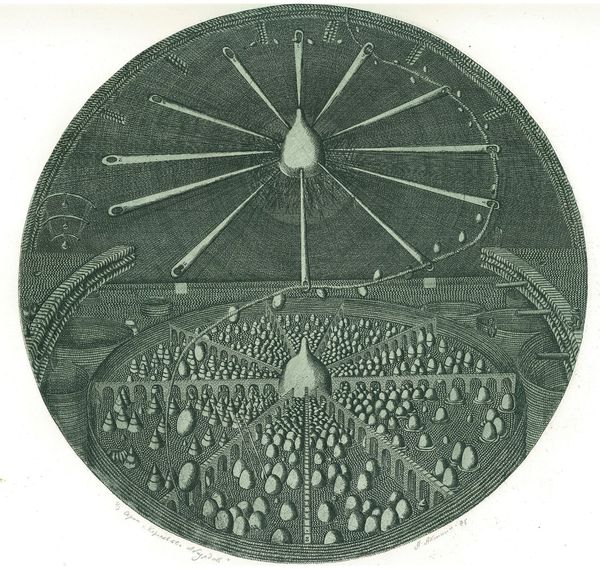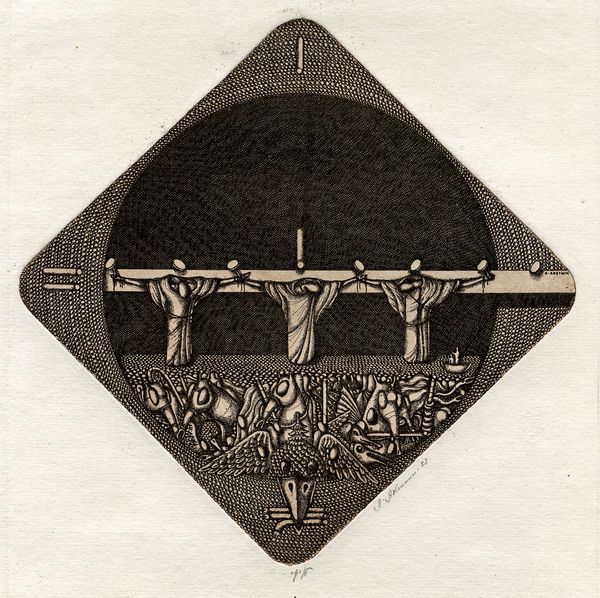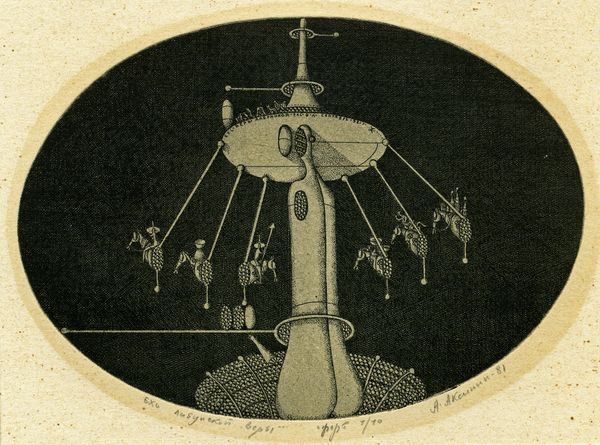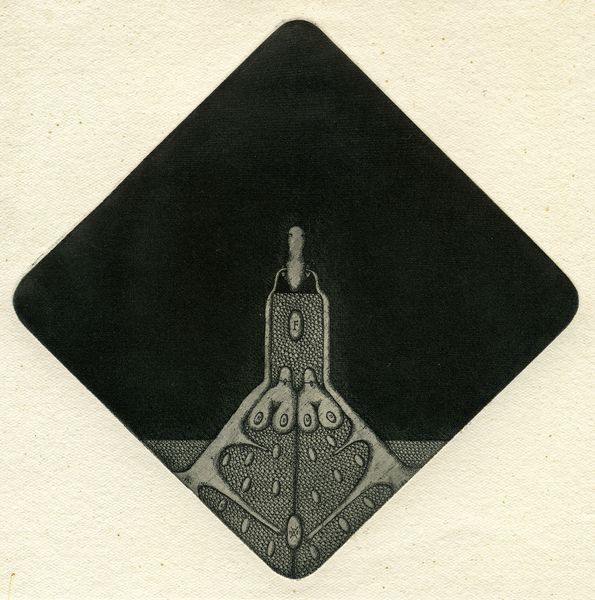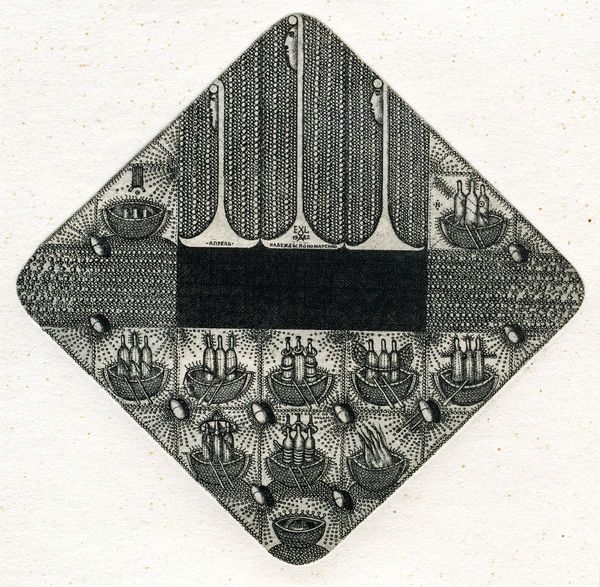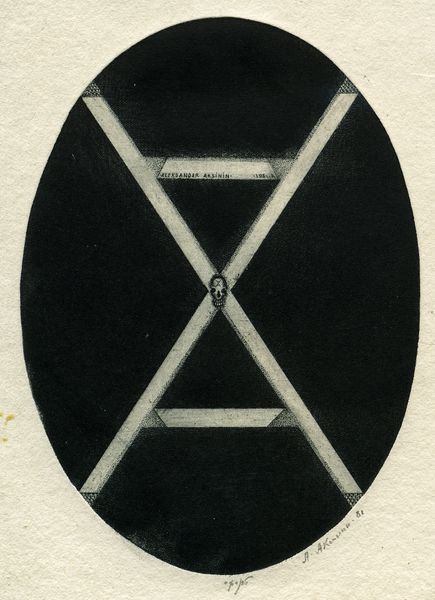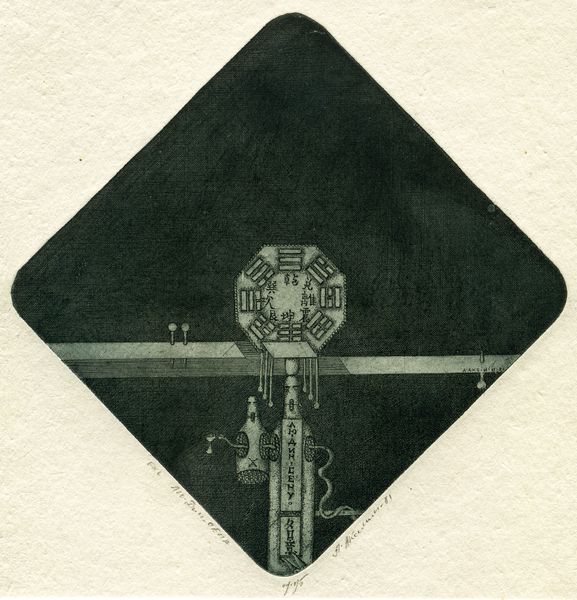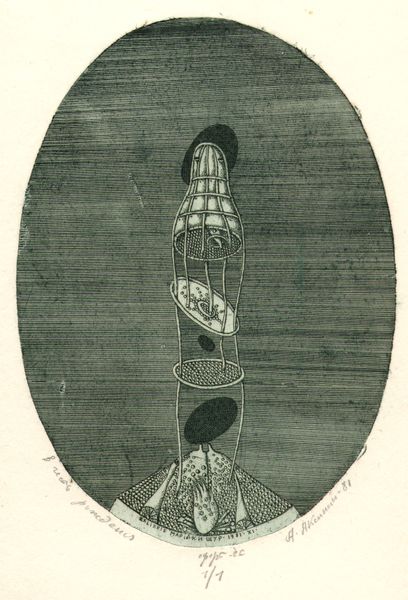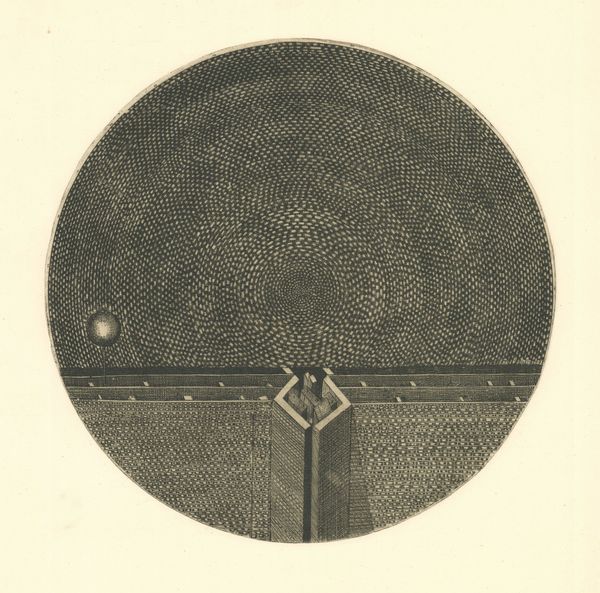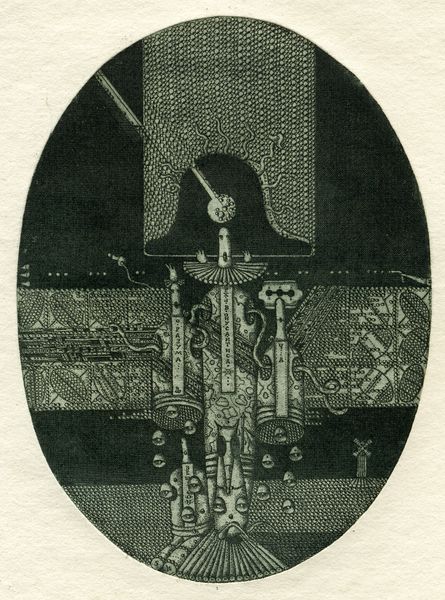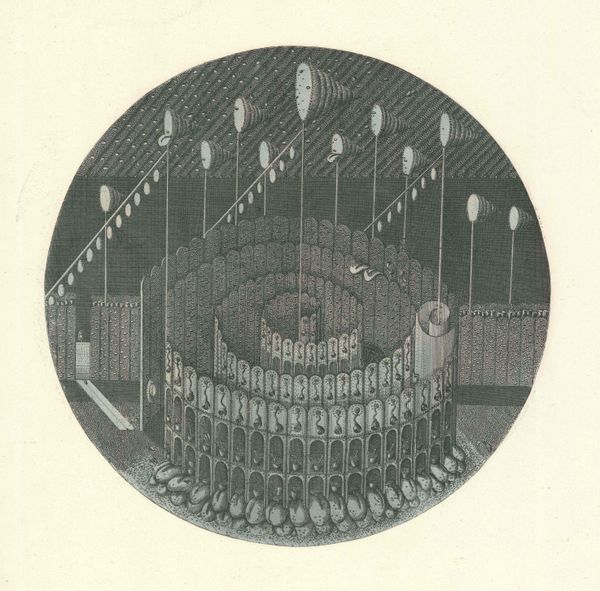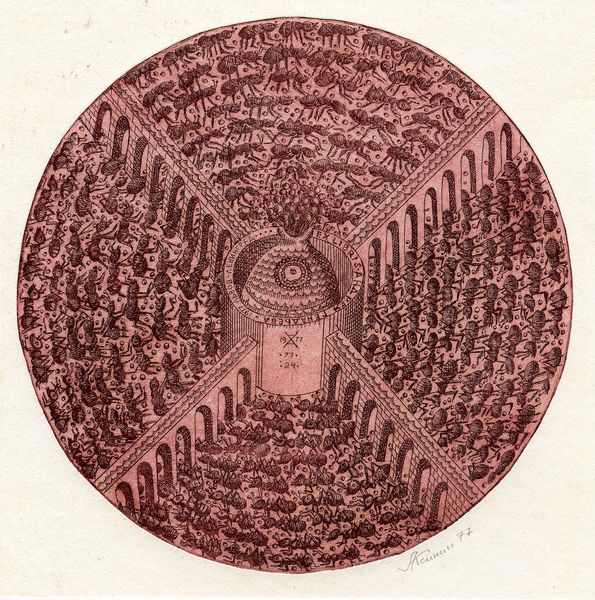
Copyright: Oleksandr Aksinin,Fair Use
Editor: This is "Exlibris of Borys Fabrykant" by Oleksandr Aksinin, created in 1978. It's a small print, an etching, and it has a rather enigmatic and unsettling atmosphere. The geometric shapes are so precise, yet the faces peering out are unsettling. How do you interpret this work, particularly within its historical context? Curator: It’s crucial to understand this piece within the context of Soviet Ukraine, where artists navigated subtle forms of resistance. An exlibris, or bookplate, becomes a powerful personal statement. Note the stark geometry alongside those masked, almost grotesque faces; they embody a critique of conformity and the suppressed individual. Editor: Masked faces and obscured figures… are these visual metaphors for a society that was hiding its true self? Curator: Precisely. Aksinin uses symbolism to critique the Soviet system. The rigid lines, the architectural elements...do they evoke a sense of imposed order and control? Then observe how this order seems to contain the repressed desires of these ghostly faces trapped within the collective. Editor: It feels like a society on the brink, where control is ever present and underlying tensions always threaten to bubble to the surface. Are there other layers to unpack? Curator: Consider also the religious overtones possibly hinted by some compositions: given that religion was prohibited, it creates another layer to decode the intricate network of possible veiled signs, representative of Ukrainian cultural memory, suppressed and distorted under Soviet pressure. Does the very act of creating such a layered, symbolic artwork become an act of resistance in itself? Editor: So, Aksinin uses a small bookplate, seemingly insignificant, as a vehicle to subvert authority and express individuality? I've never thought of bookplates this way before! Curator: Exactly. Art doesn't need to shout to be revolutionary; sometimes, the most profound statements are whispered. Recognizing such nuances broadens our view of art's capabilities within different oppressive regimes. Editor: This piece definitely has far more going on than I initially realized. I now understand the silent yet persistent forms of dissidence through the visual metaphors used here.
Comments
No comments
Be the first to comment and join the conversation on the ultimate creative platform.
